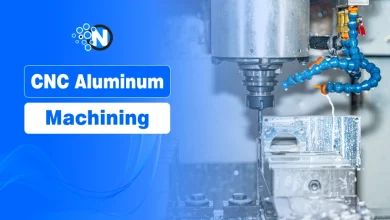Application of CNC Technology in Metal Machining
The use of CNC technology in metal machining is becoming increasingly common. This technology can significantly enhance the precision and efficiency of metal material processing, effectively controlling the process to ensure consistent quality within the same batch of metal materials. For example, in aluminum machining, precise CNC technology allows for higher machining accuracy and better surface quality, ensuring the consistency and reliability of aluminum parts.
In the future of metal processing, the application of CNC technology can further expand the variety of metal materials and types of processing, effectively meeting the diverse requirements of modern manufacturing processes.
Understanding CNC Machining
Understanding CNC machining basics is essential before delving into its applications. In this procedure, metal materials are cut and designed into the necessary shapes using computer-controlled machinery. Cutting instruments on CNC machines are precisely controlled by preprogrammed instructions.

Application of CNC Technology in Metal Machining
3D Modelling and CAD Design
Before starting metal machining, it’s essential to determine the geometry, size, dimensions and features of the metal workpiece, in order to establish a reasonable machining program to meet the actual requirements of CNC technology. Particularly in CNC aluminum machining, the material’s lightweight and easy machinability must be carefully managed to avoid deformation and surface defects during processing.
While gathering relevant data, CAD software is used to create a complete 3D model of the metal workpiece, clearly defining its various parts, features, and structures through geometric modeling tools and operations. For aluminum parts, it’s crucial to detail the external contours, curved surfaces, and holes, refining features like grooves, bosses, and threads for precise machining.
Additionally, it’s necessary to specify the material and processing techniques for the workpiece to improve the quality of metal processing, meeting specific usage requirements. These detailed steps and considerations ensure the precision and quality of CNC-machined aluminum parts.
Preparation and Clamping of Metal Materials
After the preparation of the machining program and the specific processing parameters of the metal workpiece, it is also necessary to prepare the corresponding metal materials and fix the metal materials to the CNC machine tool through stable clamping to ensure that the machining process is carried out effectively. The type of metal material needs to be reasonably selected according to the requirements of the workpiece, and select the appropriate fixture, the metal material will be firmly clamped to ensure that it will not appear in the process of machining sliding, displacement or deformation of the phenomenon, you can usually use the fixture base, the fixture clamps and other equipment to complete.

In the processing of heterogeneous metal materials, it is necessary to rationally select the fixture according to the geometry of the material to enhance the degree of stability of the clamping. After the metal material is clamped firmly, it is also necessary to adjust and calibrate it to the appropriate processing position, and to ensure that the position and direction of the metal material meet the needs of CNC machine tool processing.
If the CNC machine tool exists automatic clamping system, the priority of automatic clamping to ensure that the clamping position and clamping stability. For the same metal material needs to be processed in multiple steps, it is necessary to ensure that a number of fixtures installed in a reasonable order to enhance the safety and stability of the CNC machining process.
Processing of Metal Materials
The processing of metal materials is typically automated according to a pre-programmed machining schedule. However, because the machining of metal workpieces may involve different processing methods, tool changes may be necessary during the process.
Therefore, it’s crucial to focus on the installation and adjustment of the tools. Ensuring precise installation and proper tool path alignment when switching machining operations is essential to meet the high-quality requirements of metal material processing.
Additionally, it’s important to fully utilize the built-in monitoring system of CNC machines to perform real-time monitoring and adjustments during the machining process. For instance, when switching machining operations, the tool change process should be carefully checked. Based on the system’s data, the position and length of the newly installed tool should be verified to meet the high-precision machining requirements, thereby enhancing the overall effectiveness of metal material processing.

Detection and Adjustment of Metal Workpieces
Using sensor measurement equipment to monitor and inspect the processing quality and dimensions of materials, adjustments should be made based on feedback from the system to meet the machining requirements of the metal workpiece.
For instance, when using measuring equipment for dimension measurement, coordinate measuring machines and laser scanners can provide real-time measurements of the metal workpiece’s dimensions, comparing them with the design drawings to identify any errors in the process. Generally, automatic processing program controls can make quick adjustments and corrections.
If significant errors are detected, warnings are issued, and relevant data is provided to the equipment management personnel to determine the specific cause of the error. The management personnel can then make necessary adjustments, such as modifying the cutting force during the process or sharpening and adjusting the tool, to meet high-precision processing requirements.
Future of CNC Machining
CNC machining is always changing as technology advances. Integration with advanced technology like robotics and artificial intelligence has the potential to improve automation, accuracy, and efficiency even more. Furthermore, hybrid technologies that mix CNC machining and additive manufacturing are opening up new opportunities in the metalworking industry.
Conclusion
CNC machining is an essential tool in the metalworking business nowadays. Its uses across many industries, fosters innovation and raises the caliber of products. CNC machining is expected to play an increasingly important role in the future of manufacturing as technology develops.




